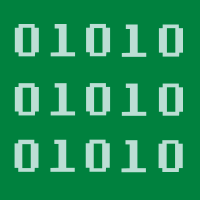Topic Editors

Software Engineering and Applications
Topic Information
Dear Colleagues,
This Topic on software engineering and applications (SEA) aims to provide a forum for scientists/researchers/engineers/practitioners and academicians to share their ideas, experiences, and research in various aspects and applications of software engineering. SEA covers all the frontier issues and trends in modern software development processes. It includes process models, development processes for different software platforms (e.g., social networks, clouds), a process for adaptive, dependable, embedded systems, agile development, software engineering practices, requirements, systems, and design engineering including architectural design, component-level design, formal methods, software modeling, testing strategies, tactics, process and product metrics, web engineering, project management, risk management, and configuration management. This Topic will also consider papers on the development process of software/software systems (including AI-based systems) in various application areas, e.g., agriculture, aviation industry, business, cybercrime, education, government, and the military.
The following topics are welcome:
- Software development fundamentals;
- Software process models;
- Software standardization and certification;
- Advanced topics in software engineering.
- Agile, DevOps models, practices, challenges;
- Software requirement engineering;
- Software process assessment (SPA) and software process improvement (SPI);
- Software maintenance and testing;
- Software quality management;
- Artifacts, software verification and validation;
- Software project management;
Software engineering practices and applications
- Knowledge-based systems and formal methods;
- Algorithms and programming languages;
- Search engines and information retrieval;
- AI for software systems;
- Multimedia and visual software engineering;
- Formal methods;
- Web engineering and its applications;
- Web-based systems in various applications areas;
- Knowledge-based systems;
- Software gaming;
- Software modeling and simulation;
- Various applications software in cloud computing, green computing, cyber security, IoT, big data, distributed systems, supercomputing, quantum computing;
- Software, algorithms, and software systems in agriculture, aviation industry, business, management, education, health, government, military, etc.
Prof. Dr. Sanjay Misra
Prof. Dr. Robertas Damaševičius
Prof. Dr. Bharti Suri
Topic Editors
Keywords
- software
- software engineering (SE)
- advanced SE applications
- web engineering
- artificial intelligence and SE
Participating Journals
| Journal Name | Impact Factor | CiteScore | Launched Year | First Decision (median) | APC | |
|---|---|---|---|---|---|---|

Applied Sciences
|
2.7 | 4.5 | 2011 | 16.9 Days | CHF 2400 | Submit |

Electronics
|
2.9 | 4.7 | 2012 | 15.6 Days | CHF 2400 | Submit |

Informatics
|
3.1 | 4.8 | 2014 | 30.3 Days | CHF 1800 | Submit |

Information
|
3.1 | 5.8 | 2010 | 18 Days | CHF 1600 | Submit |

Software
|
- | - | 2022 | 19.3 Days | CHF 1000 | Submit |

MDPI Topics is cooperating with Preprints.org and has built a direct connection between MDPI journals and Preprints.org. Authors are encouraged to enjoy the benefits by posting a preprint at Preprints.org prior to publication:
- Immediately share your ideas ahead of publication and establish your research priority;
- Protect your idea from being stolen with this time-stamped preprint article;
- Enhance the exposure and impact of your research;
- Receive feedback from your peers in advance;
- Have it indexed in Web of Science (Preprint Citation Index), Google Scholar, Crossref, SHARE, PrePubMed, Scilit and Europe PMC.



